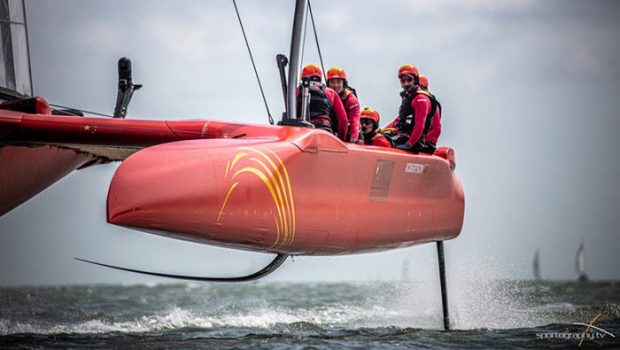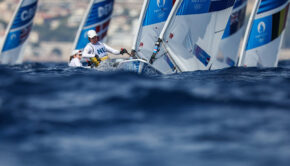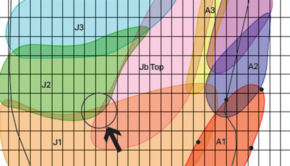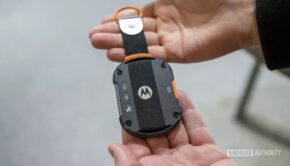Fulfilling the communication needs
Published on September 24th, 2019
Good communication is a vital part of any team sport and it’s certainly no different in competitive sailing. The success of a manoeuvre, a rounding or a key part of the race can be traced back to the communication used at the time. Just as important as the right things being said is the right people hearing those things.
In yacht racing, as the largest yachts get larger and the fastest yachts get faster, the requirement for good, reliable audio communication systems is also growing.
That sector is also expanding. Foiling is becoming more and more common, leading to new events and yacht builds; there are over twenty superyacht racing events a year and multiple 60 to 100-foot race yachts are on the circuit.
To meet that need for good audio systems in yacht racing, Big Blue Yacht Communications was born. Assisted by Matt Cornwell, one of the sailing team members with Land Rover BAR for the 35th America’s Cup in 2017, he explains the challenges in fulfilling the communication needs:
As a bowman I am no stranger to a manoeuvre going wrong because a key part of communication didn’t make its way forward from the afterguard or visa-versa. My focus turned to communications (comms) systems when they became one of my shore responsibilities for the Land Rover BAR team.
The AC50 class yacht was chosen for the event and, from the start, it was clear that an effective audio comms system was going to be an important requirement. However, I don’t think anyone realized just how important it would be or how much the scope of the comms system would have to expand.
Initially I thought I would be sourcing a system for six sailors to communicate during the racing. It quickly became apparent that the system would need to achieve so much more and be part of a wider communication loop which not only covered the support craft following on the water, but also crossed an ocean to Portsmouth (England) where the staff needed to hear what was being said live on the race boat in Bermuda.
The complex nature of AC50 yacht racing means the team on the support craft need to constantly analyze various streams of data, from performance data, to loads, to the system’s software settings. They are not the only people who need reliable communications with the yacht; coaches, rescue divers, support craft drivers, back-up sailors, boat captains, and electrical and hydraulic engineers all want to listen to what’s going on onboard the yacht.
Audio was also important for use during debriefs to get a really accurate analysis of what was going on during testing and racing periods. Communications were paired with the various camera streams being sent to both the base in Bermuda and in Portsmouth and recorded for analysis after sailing. Onboard audio and camera footage were then synchronized with relevant pieces of data.
The fast and furious AC50s produce a punishing environment that none of the existing audio systems being used in yacht racing would stand up to. The yachts are wet, physically demanding and extremely loud. I once took a decibel meter onto one of the yachts to test the volume being thrown at us. I recorded sound levels up to 108 decibels and regularly over 100 decibels. In layman’s terms, that’s the same level of noise produced when an underground train goes through a station.
The constant flushing with salt water is a real challenge for the kit too. Most microphones don’t last long in that environment. On paper, bone and throat microphones are a great solution but the volume levels on the racing yacht mean the very slightly muffled sound you get with those options is greatly amplified, rendering them unusable.
Our audio comms system also needed to include a lack of latency. A small delay in sound getting from the receiver’s microphone to the ear can be very distracting if the receiver can also hear them naturally, producing an unwanted constant echo.
Other requirements included user simplicity, decent signal range across the water, integration with the race committee’s radio and robust equipment which would stand up to the punishments meted out to it by focused athletes on the water.
There are some excellent audio systems on the commercial market, for example, we are often asked why we can’t just use smart phones or Beats by Dr Dre headsets. But these products just don’t tick the boxes or just wouldn’t survive in the yacht racing environment.
The challenge was to find both products adaptable to the yacht racing environment and companies who would accept relatively small orders but still work with us to tailor-make the systems. Military supply companies usually look to sign contracts for thousands of pieces of equipment. A big order for us would be thirty pieces.
It was at this time when Big Blue Yacht Communications was looking to develop a wireless audio system for the marine military market and needed a platform to develop it on.
As the scope of our system was beyond anything that had been developed in the America’s Cup before, and in fact, yacht racing as a whole, our development process was demanding with requirements changing frequently.
We worked closely with the company to refine the product and the result was the most comprehensive audio system ever used in yacht racing which functioned without fault throughout the America’s Cup regatta in Bermuda.
Big Blue Yacht Communications has hit the ground running and has already been approached by two high profile clients, an America’s Cup team working towards the 36th Cup in New Zealand and the SailGP series who commissioned systems for all six of their F50s.
Big Blue Yacht Communication’s first challenge was to design a headset. High end sportsmen and military users have exacting standards and the challenge was to come up with an (intelligible) headset microphone that was lightweight, robust and comfortable.
Following numerous trials and using intelligence gathered from sporting professionals and military users and looking back to years of audio development in Germany, Big Blue Yacht Communications has designed and manufactured its own headset for professional sailors.
The company’s goal is to provide high quality, reliable communication platforms which will allow sailors to talk to each other without signal interruptions or equipment failure, allowing them to race effectively at the highest level.
Currently it’s the crews on large and foiling yachts that are using comms systems. Big Blue Yacht Communications believes that once sailors are familiar with their use and discover how effective and reliable they are the use of the systems will filter down to smaller boats. Already the company has been approached by dinghy sailing coaches who want to be able to stay talking to their sailors whilst training.
For additional information: www.bigblueyachtcoms.com









 We’ll keep your information safe.
We’ll keep your information safe.